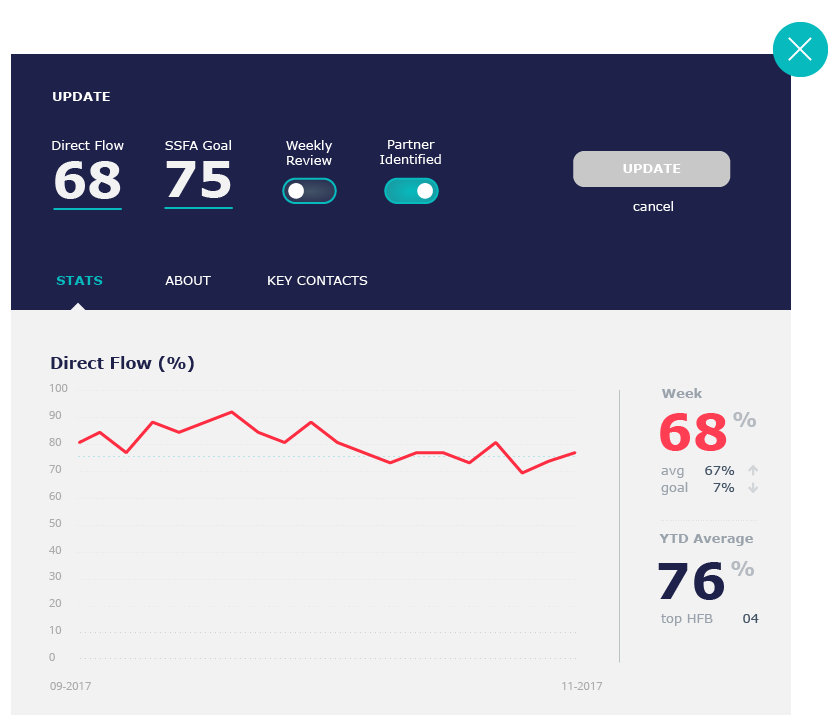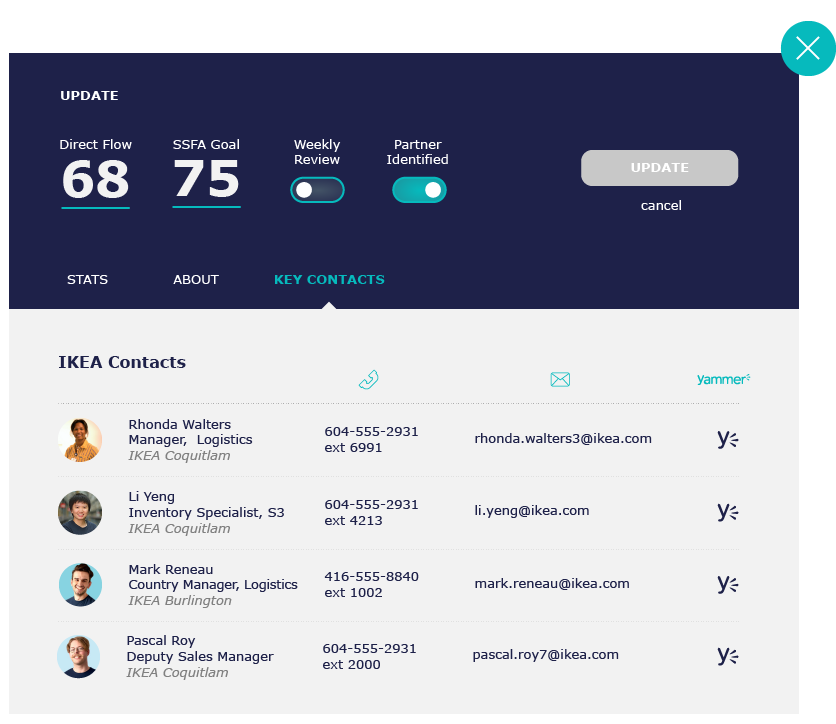IKEA SSFA Dashboard
With thousands of products and customers moving through the store daily, how can leaders and their teams more effectively keep track of commercial performance goals in the Self Serve Furniture Area (SSFA) at IKEA?
One SSFA manager in Coquitlam has taken the challenge to address this question with his idea of a desktop-based dashboard tool which compiles the KPIs of 3 main commercial areas: inspiration, profitability, and efficiency. This project conceptualizes the idea of a helpful desktop application - by aggregating multiple logistical and financial KPIs into one central, user-friendly tool, stakeholders can more efficiently and effectively steer the SSFA toward performance goals.












